The Socioeconomic Impact of Workforce Displacement
The Future of Work and Socioeconomic Disruption
The Socioeconomic Impact of Workforce Displacement
AI and Automation Reshape the Worldwide Workforce
 The rise of automation and artificial intelligence promises to reshape the global workforce, but not everyone will benefit equally from this transformation. While these advancements offer increased productivity and economic growth, they also pose significant challenges to social and economic stability. Without strategic planning and thoughtful policies, automation could worsen existing inequalities, create regional imbalances, and leave millions without a clear path to economic security.
The rise of automation and artificial intelligence promises to reshape the global workforce, but not everyone will benefit equally from this transformation. While these advancements offer increased productivity and economic growth, they also pose significant challenges to social and economic stability. Without strategic planning and thoughtful policies, automation could worsen existing inequalities, create regional imbalances, and leave millions without a clear path to economic security.
In this blog, we’ll explore how automation could widen income inequality, impact different regions unevenly, and highlight the crucial role of government and policy in managing these disruptions. Drawing insights from Mustafa Suleyman’s latest book, The Coming Wave, we’ll delve into the potential dangers and opportunities automation presents and discuss how society can navigate this wave of technological change.
Economic Disparities: Will Automation Widen the Gap?
One of the most pressing concerns about workforce automation is its potential to exacerbate income inequality. As more tasks become automated, the benefits of these technologies are likely to flow to those who own the systems—large corporations, investors, and tech-savvy entrepreneurs—while displacing lower-skilled workers who are less equipped to transition into high-tech roles.
Automation in the Real World: The ILA Strike and the Fight Against Job Replacement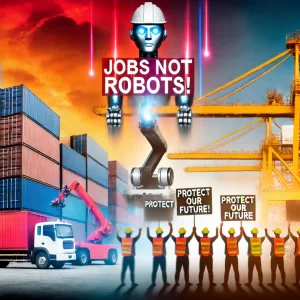
As of this writing, the East and Gulf Coast Port members of the International Longshoreman’s Association (ILA)—representing over 65,000 labor union members—just came to a temporary settlement to their strike. They received a 62% pay increase over a six year timeframe, however no concessions were make by owners regarding the advent of port automation. Among their demands was a 70% pay increase, but even more crucial is their call for a guarantee that their jobs will not be replaced by AI and automation. This strike serves as a real-world example of the growing tension between workers and employers as automation technologies advance.
Port workers are acutely aware of the risks that automation poses to their livelihoods. With AI-powered cranes, autonomous cargo handling, and logistics robots becoming more prevalent, traditional roles in shipping and freight handling are under threat. The ILA’s stance highlights the urgent need to protect vulnerable workers from displacement, especially in industries where repetitive and manual tasks are easily automated.
Winners and Losers
 The current situation also underscores a broader point made by Mustafa Suleyman in The Coming Wave: without proactive policies and worker protections, technological advancements will disproportionately benefit a small group of stakeholders, leaving millions of workers economically stranded. The ILA strike is a clear signal that workers across industries are recognizing these risks and are starting to push back against unchecked automation.
The current situation also underscores a broader point made by Mustafa Suleyman in The Coming Wave: without proactive policies and worker protections, technological advancements will disproportionately benefit a small group of stakeholders, leaving millions of workers economically stranded. The ILA strike is a clear signal that workers across industries are recognizing these risks and are starting to push back against unchecked automation.
For a deeper understanding of the growing impact of automation on labor movements, explore this article by Bloomberg. US Dockworkers Strike to Stop Automation Already Seen at Other Ports– It provides an in-depth look at the current strike and its implications for the future of labor in an increasingly automated world.
The Coming Wave
In The Coming Wave, Mustafa Suleyman discusses how the rapid adoption of AI could lead to a scenario where wealth concentrates even further at the top, leaving a large segment of the population economically stranded. With AI and automation boosting productivity but reducing the demand for routine jobs, middle- and lower-income workers could see stagnant wages, fewer opportunities, and a decline in overall economic mobility. Suleyman notes that without proactive intervention, the socioeconomic rift will continue to grow, creating what he refers to as a “polarized society”—one in which the economic winners thrive while a growing underclass struggles to find its place in the new economy.
Navigating a Polarized Society: Lessons from Our Previous Blogs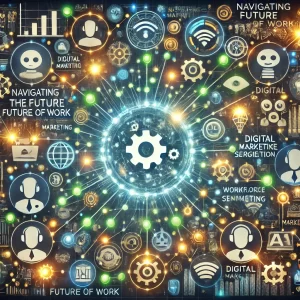
Mustafa Suleyman’s insights in The Coming Wave paint a stark picture of how rapid AI adoption could widen the gap between the wealthy and the economically vulnerable, creating a “polarized society” where the winners thrive and others are left behind. This idea of polarization is something we’ve explored in depth throughout our series on the Future of Work, analyzing how technology has historically transformed economies and reshaped job markets.
For a comprehensive look at the historical context, revisit our blog, “The Dawn of Automation: A Historical Perspective,” where we discussed the early days of automation and its impact on the working class. Understanding these patterns can help us anticipate the challenges ahead.
Additionally, in “Mapping the Workforce of Tomorrow,” we explored which job sectors are most at risk and where new opportunities are likely to emerge. This serves as a practical guide for workers and business leaders to position themselves strategically in an increasingly automated world.
Lastly, in “The Automation Scenarios: Predicting the Impact,” we evaluated the varying degrees of automation adoption—rapid, moderate, and slow—and what each scenario means for job displacement and wealth distribution. Reviewing these scenarios can provide a clearer picture of the potential socioeconomic shifts that Suleyman discusses in his book.
These earlier discussions provide valuable context for Suleyman’s warnings, offering insights and strategies for navigating the challenges posed by automation. If you haven’t read these yet, we encourage you to explore them to gain a deeper understanding of the trends shaping our future.
A Disproportionate Impact on Routine and Manual Jobs
The most vulnerable occupations are those involving repetitive, manual, or predictable tasks. According to research from the McKinsey Global Institute, jobs in manufacturing, food service, and transportation are at the highest risk of displacement. For example, autonomous vehicles could eliminate millions of driving jobs, and AI-driven customer service systems could replace a substantial portion of call center roles. This trend poses a severe threat to workers who lack the skills to transition into new, higher-paying positions.
In contrast, those working in fields that require creativity, complex decision-making, or emotional intelligence—such as healthcare, education, and strategic management—are less likely to be affected. However, even these roles could see stagnating wages if the benefits of increased productivity are not distributed equitably. Suleyman emphasizes the need for a new social contract that addresses these disparities, ensuring that workers displaced by automation have access to retraining, financial support, and new opportunities.
To gain a deeper understanding of how automation is reshaping job markets and what can be done to mitigate its impact, you can explore this podcast with Mustafa Suleyman on The Ezra Klein Show, where he discusses the ethical and economic implications of AI and automation in depth.
Geographical Impacts: Automation’s Uneven Effects Across Regions
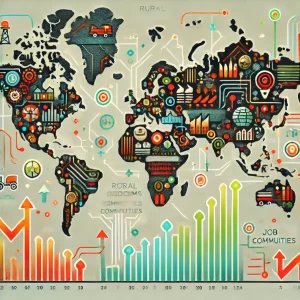 While the economic impacts of automation will be felt globally, not all regions will experience these changes in the same way. In The Coming Wave, Suleyman points out that rural areas and regions heavily reliant on manufacturing and routine service jobs will bear the brunt of automation’s negative effects. Urban centers with diversified economies and a concentration of tech and knowledge-based industries, on the other hand, are likely to thrive.
While the economic impacts of automation will be felt globally, not all regions will experience these changes in the same way. In The Coming Wave, Suleyman points out that rural areas and regions heavily reliant on manufacturing and routine service jobs will bear the brunt of automation’s negative effects. Urban centers with diversified economies and a concentration of tech and knowledge-based industries, on the other hand, are likely to thrive.
Mustafa Suleyman shares his perspective on the impact of automation on different regions and industries, highlighting the need for tailored policies. Watch – Will AI Save or Destroy Humanity
Rural vs. Urban Divide
Rural communities, which often depend on industries like agriculture, manufacturing, and logistics, could face severe job losses. For example, the automation of agricultural processes could disrupt traditional farming communities, while the rise of AI-driven logistics solutions could decimate warehouse jobs in small towns that rely on these industries for economic stability.
Meanwhile, cities that are already hubs of innovation—like San Francisco, New York, and Austin—may see a surge in job creation and investment, further widening the rural-urban economic divide. This divergence could exacerbate existing social tensions, leading to increased political polarization and discontent in economically struggling regions.
Suleyman suggests that regional policies must be tailored to address these disparities, focusing on reskilling and incentivizing new industries to invest in economically vulnerable areas. One possible solution is the development of “Regional Resilience Centers” that focus on training, education, and small business development in automation-impacted regions.
For more insights into how regional differences shape the impact of automation, listen to Mustafa Suleyman’s interview on the Tech Won’t Save Us Podcast.
Social Safety Nets: The Role of Government and Policy
The potential for widespread economic disruption caused by automation raises the question: what role should governments play in managing these changes? According to The Coming Wave, without a robust social safety net, the negative effects of automation could lead to long-term unemployment, poverty, and social instability. Suleyman advocates for a radical rethinking of social policy to address these challenges, including the introduction of Universal Basic Income (UBI), stronger labor protections, and expanded access to education and retraining programs.
Universal Basic Income: A Possible Solution?
One of the most debated policy responses to automation is Universal Basic Income (UBI). UBI would provide every citizen with a guaranteed income, regardless of employment status, to ensure that people can meet their basic needs even in a highly automated economy. Suleyman argues that while UBI is not a panacea, it could serve as a critical safety net to prevent widespread poverty and allow individuals the financial flexibility to pursue reskilling, entrepreneurship, or creative endeavors.
Countries like Finland and pilot programs in the United States have already experimented with UBI, and the results have shown promise in reducing poverty and improving mental health. However, implementing UBI at scale will require significant political will and financial resources, raising questions about feasibility and long-term sustainability.
Retraining and Education: Preparing for the Jobs of Tomorrow
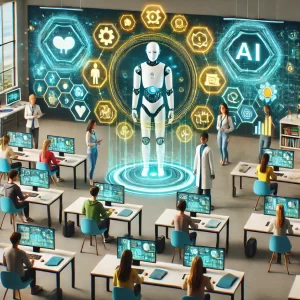 Suleyman also stresses the importance of investing in education and training programs that prepare workers for roles in the new economy. As automation reshapes industries, the demand for jobs in AI development, green energy, and healthcare will grow. Government policies should focus on making these training programs accessible and affordable, with special emphasis on communities most at risk of job displacement.
Suleyman also stresses the importance of investing in education and training programs that prepare workers for roles in the new economy. As automation reshapes industries, the demand for jobs in AI development, green energy, and healthcare will grow. Government policies should focus on making these training programs accessible and affordable, with special emphasis on communities most at risk of job displacement.
For a deeper dive into how social safety nets can support workers during this transition, check out Suleyman’s talk on Building a Future-Ready Workforce at TEDx.
Be Proactive: Take Control of Your Future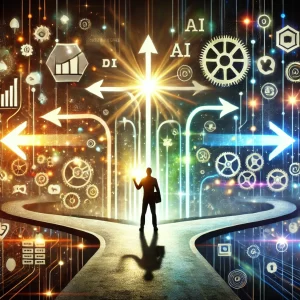
Those who come out ahead in the age of disruption won’t be the ones waiting for governments, corporations, or educational institutions to adapt—they will be the individuals who take the initiative to prepare themselves now. With the wave of automation and AI transforming industries, relying on traditional methods of earning and job security will only leave you vulnerable. The key is to get ahead of the curve, acquire the skills that position you for success, and leverage emerging opportunities before they become mainstream.
This is why we created the Digital Marketing in the Age of Disruption blog series and developed our course, Mastering the Art of Wealth Creation: A Journey Through Mind Power and Marketing. The most successful people will be those who actively equip themselves with the knowledge and tools to navigate this shift and seize control of their financial future.
Conclusion: Navigating the Socioeconomic Impact of Automation
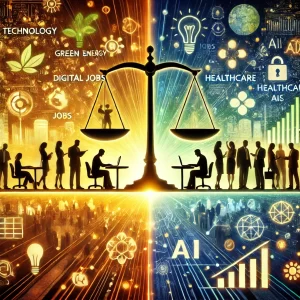 The socioeconomic impact of workforce automation is not just a matter of economic efficiency—it’s a question of social equity and stability. If we fail to address the widening disparities, regional inequalities, and lack of support for displaced workers, the future of work could become a future of deepening inequality and unrest. However, with proactive policies, investments in education, and a focus on ethical AI implementation, we can build a future where technology benefits everyone, not just the few.
The socioeconomic impact of workforce automation is not just a matter of economic efficiency—it’s a question of social equity and stability. If we fail to address the widening disparities, regional inequalities, and lack of support for displaced workers, the future of work could become a future of deepening inequality and unrest. However, with proactive policies, investments in education, and a focus on ethical AI implementation, we can build a future where technology benefits everyone, not just the few.
To stay ahead, don’t wait—be proactive. Read The Coming Wave by Mustafa Suleyman and engage with the Wealth Creation Mastermind curriculum to position yourself for success in this rapidly evolving landscape. Visit our course page to explore how you can transform uncertainty into opportunity and take control of your financial destiny. Click Here to Learn More.
#Automation, #AI, #FutureOfWork, #JobDisplacement, #IncomeInequality, #TheComingWave, #DigitalTransformation, #LaborMovement, #GovernmentPolicy, #UniversalBasicIncome, #WealthCreation, #TechDisruption, #GreenEnergy, #Healthcare, #SocialImpact

John Rogers is a former Wall Street portfolio manager and served as CEO of Premium Enterprises and President of The Colorado Tire Recycling Center. He transitioned to digital marketing, founding WealthCreationMastermind.com to empower home-based entrepreneurs with cutting-edge strategies. Creator of the “Mastering the Art of Wealth Creation” online course, John has driven significant growth in network marketing, achieving the Blue Diamond rank and earning the title of Univera Associate of the Year in 2015. His expertise in leveraging technology for financial success transforms how entrepreneurs achieve their business goals.